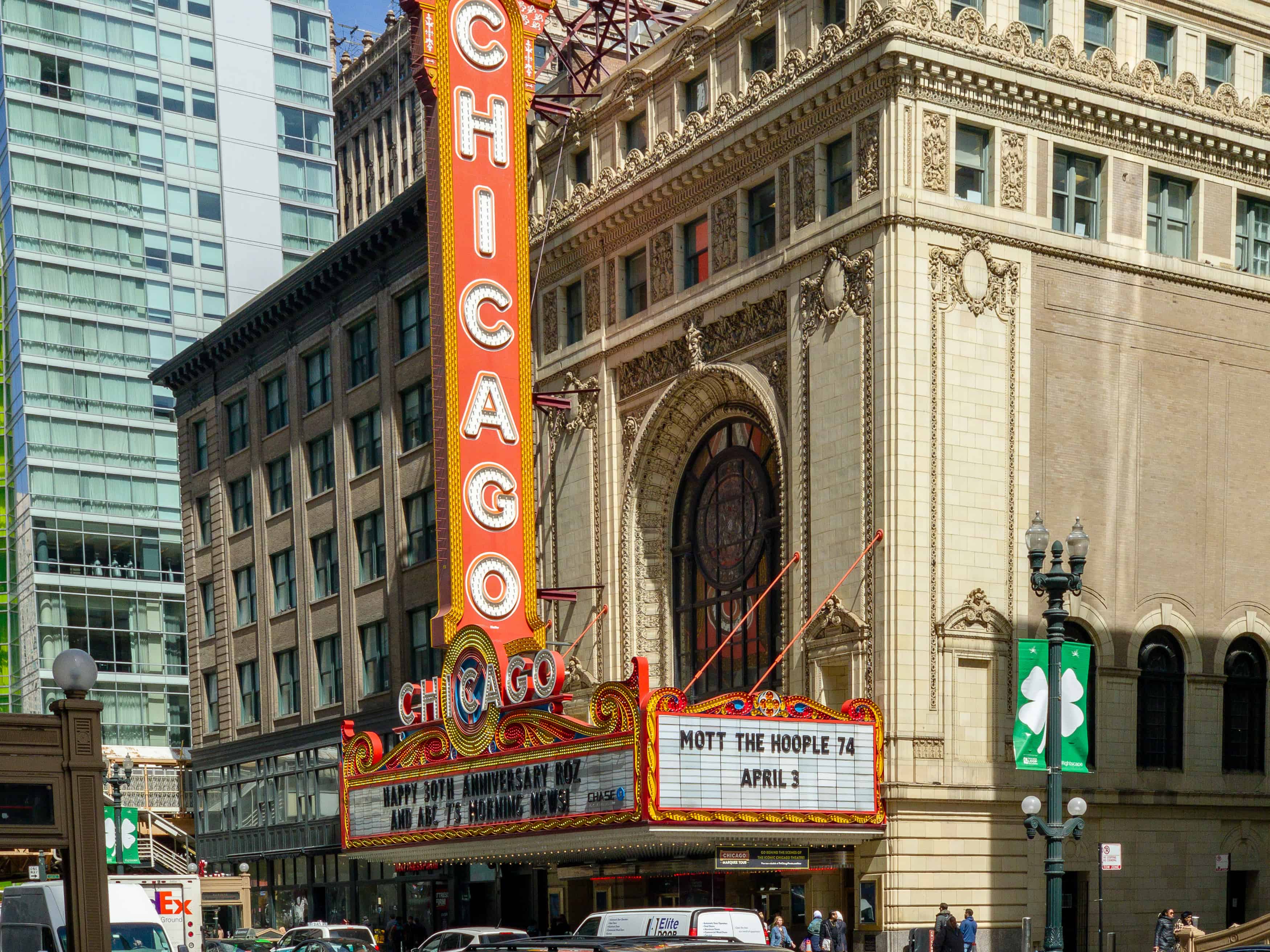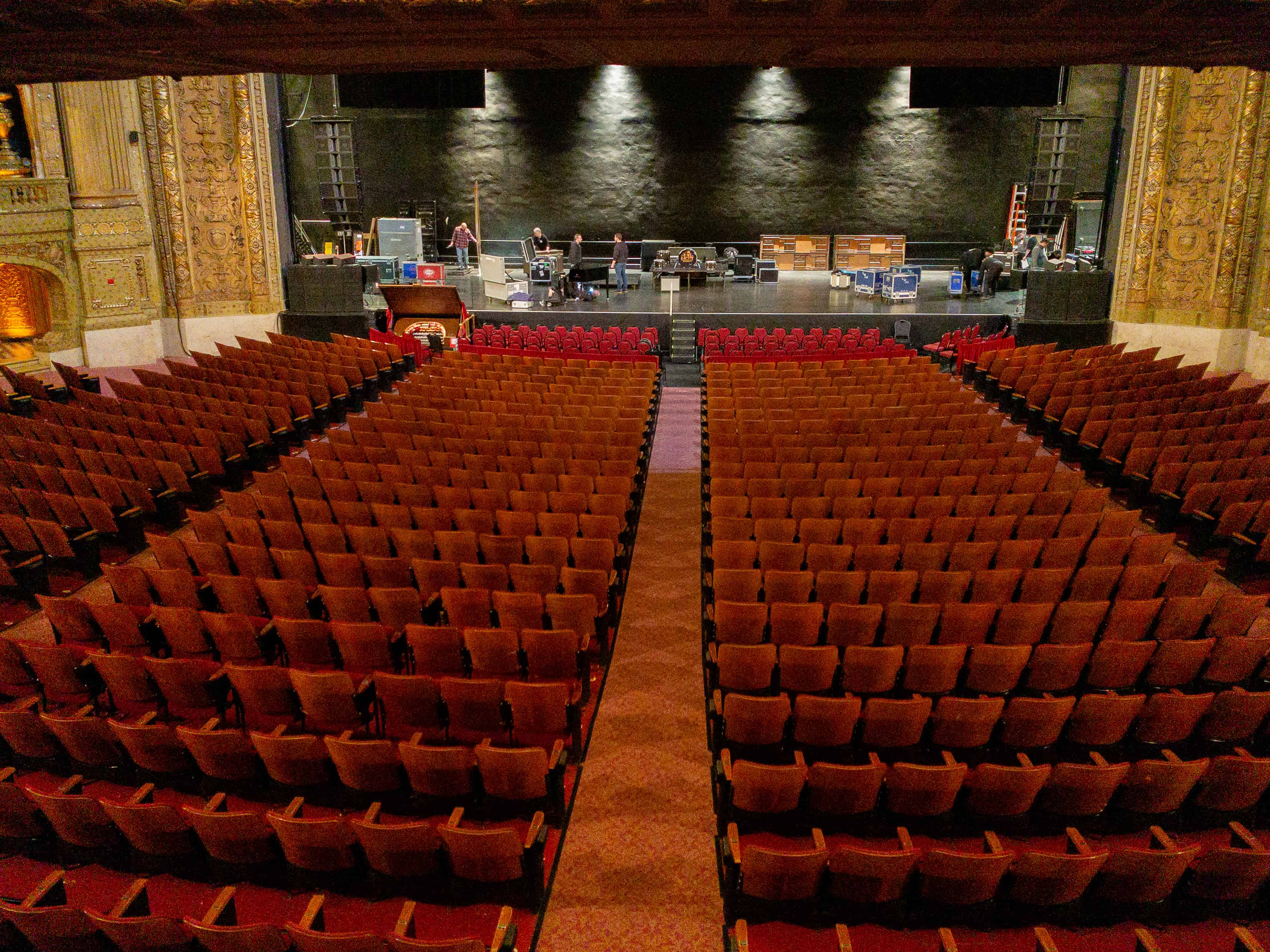

For example, Ronald Reagan announced his engagement to Jane Wyman at the theater. The building has been associated with popular culture occasions. This time Grell chose Greek/Roman deities as the theme for the large oil on canvas murals which are on public exhibit today in the theatre auditorium. Part of the World's Fair renovation included another commission by Balaban & Katz for Grell to repaint the architecturally enclosed fourteen murals. In preparation for the 1933 World's Fair in Chicago, the Chicago Theatre was redecorated. This proved so successful that jazz bands became a mainstay of the Chicago Theatre's programming through the 1920s and into the 1930s. One of its biggest draws was live jazz, which Balaban and Katz promoted as early as September 1922 in a special event they called " Syncopation Week". Throughout its existence, many of the top performers and stars of their day made live appearances at the theater. ĭuring its first 40 years of operation, the Chicago Theatre presented premiere films and live entertainment.
Chicago theater movie#
The theater's strategy of enticing movie patrons with a plush environment and top notch service (including the pioneering use of air conditioning) was emulated nationwide.


Poet Carl Sandburg, reporting for the Chicago Tribune, wrote that mounted police were required for crowd control. Other attractions included a 50-piece orchestra, famed organist Jesse Crawford at the 26-rank Wurlitzer theatre organ -"Oh, yes, it was mighty," recalled Orson Welles : 151 - and a live stage show. Capacity crowds packed the theater during its opening week for the First National Pictures feature The Sign on the Door starring Norma Talmadge. When it opened October 26, 1921, the 3,880-seat theater was promoted as the "Wonder Theatre of the World". The original 1921 interior decoration of the auditorium included fourteen large romantic French-themed murals surrounding the proscenium by Chicago artist Louis Grell (1887–1960), a common feature that Rapp and Rapp architects included in their movie palace designs. It is the oldest surviving example of this style in Chicago. The Chicago Theatre was among the earliest theaters in the nation to be built in Rapp and Rapp's signature Neo-Baroque French- revival style. Preceded by the now-demolished Tivoli Theatre of Chicago and Capitol Theatre of New York City, the Chicago Theatre was the ".largest, most costly and grandest of the super deluxe movie palaces" built up to that date and thus now the oldest surviving grand movie palace. The Rapp brothers also designed many other B&K properties in Chicago, including the Oriental and Uptown Theatres. Rapp were primary architects and the final construction cost was $4 million ($60.8 million in 2021 dollars ). The theater would become the flagship for 28 theaters in the city and over 100 others in the Midwestern United States that B&K operated in conjunction with the Paramount Publix chain. Ībe and Barney Balaban, together with Sam and Morris Katz-founders of the Balaban and Katz theater chain, built the Chicago Theatre in 1921 as one of a large chain of opulent motion picture houses. The Y-shaped figure behind the horizontal word Chicago on the State Street marquee is the city's " municipal device," a badge which symbolizes the forked Chicago River at Wolf Point. The distinctive Chicago Theatre marquee, "an unofficial emblem of the city", appears frequently in film, television, artwork, and photography. The building was added to the National Register of Historic Places on June 6, 1979, and was listed as a Chicago Landmark on January 28, 1983.

owns and operates the Chicago Theatre as a performing arts venue for stage plays, magic shows, comedy, speeches, sporting events and popular music concerts. Along with the other B&K theaters, from 1925 to 1945 the Chicago Theatre was a dominant movie theater enterprise. Balaban, his brother Barney Balaban and partner Sam Katz. Built in 1921, the Chicago Theatre was the flagship for the Balaban and Katz (B&K) group of theaters run by A. The Chicago Theatre, originally known as the Balaban and Katz Chicago Theatre, is a landmark theater located on North State Street in the Loop area of Chicago, Illinois, United States. Neo-Baroque/ Neoclassical (exterior) French Baroque ( Neo-Baroque)(interior)


 0 kommentar(er)
0 kommentar(er)
